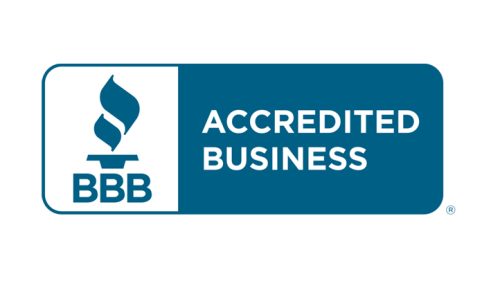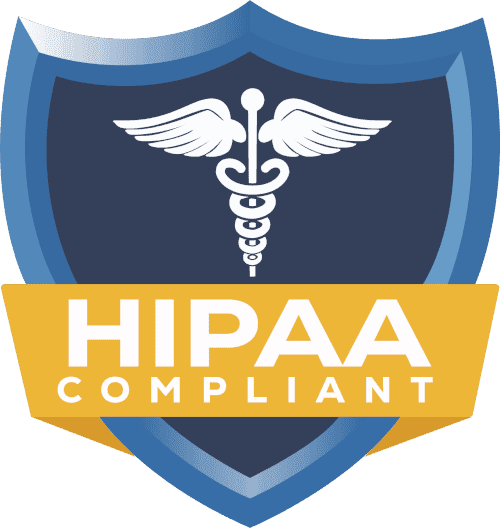How Much Do Medical Credentialing Services Cost in the USA

Assuming you are either a medical practitioner, a provider panel group leader, or in billing and RCM, you are not new to the idea that credentialing is one of those back-of-the-scenes activities that determines a pay or no-pay decision. The most used question in the majority of practices is quite straightforward: How expensive are the services of medical credentialing in the USA? It relies on yourself, the number of payers you will have, the states where you will be operating, and the number of today’s executives who will be working on your credentialing, or you can employ an expert team.
In this physician-focused guide, we will step through what is in the credentialing, which elements alter the price, national costs, realistic cost ranges, how latent delays cause costs, cost-cutting measures, and how a specific partner like Credex Healthcare can assist you in reducing the total costs and maintaining your revenue.
Understanding What Medical Credentialing Involves
Medical credentialing refers to the official process of the qualification of the provider and qualifying the provider to engage in a payer network. It is also required of any provider who wishes to bill insurance, and it has steps that extend even to complex payer-specific applications.
Fundamentally, credentialing checks on education, training, licensure, board certifications, malpractice history, DEA registration (where applicable), and references. It may also need to get registered or create a profile with the national platforms such as CAQH ProView and NPPES (the platform where the NPI is stored). In the case of Medicare, registration can be performed on PECOS or a state-specific portal, and Medicaid registration is usually a state-level process that is not detailed in the same way.
Factors That Influence Credentialing Costs in the U.S.
The cost of credentialing is based on pre-determined variables. Knowing them will make you come up with realistic budgets and select the most affordable arrangement to conduct your practice.
- First, provider type matters. Doctors (MD/DOs) are the most tiresome to verify and are usually confirmed by the hospital, various board certifications, and payer-specific credentials; hence, the work and expense are higher. The individual cost per provider is smaller with advanced practitioners such as nurse practitioners and physician assistants, but when they sign up with numerous payers or even different states, the disparity is small. There can be additional documentation required by behavioral health providers and allied health professionals by way of supervision, certifications, or state-specific approvals, which can be time-consuming and expensive.
- Second, there are fluctuations in the number of payers you have to enroll. Minimal cost is incurred in enrolling a provider into 2 local commercial payers as compared to enrolling the same provider into 12 commercial payers, plus Medicare plus Medicaid in three states. The payer applications themselves are individual submissions that require follow-ups and may have additional requests to be attached; therefore, they become expensive as the number of payers increases.
- Third, states of practice are important. Multi-state providers: The multi-state provider might have to repeat the sequence of the credentialing process per state or per payer trading in a different state. The state Medicaid processes vary in regulations, and the multi-state credentialing becomes more challenging and expensive.
- Lastly, there is the question of who works. Salaries, benefits, software, and management overheads are needed for in-house credentialing. Outsourcing implies on-per-use or flat monthly. Both models have tradeoffs, and we will discuss them in greater detail below.
Average Cost of Credentialing Services in the USA
Estimating a national mean in credentialing is not easy, and practical ranges are a way of budgeting practices. With normal commercial and government payers, the range of cost per payer per provider in the United States is most frequent. Anticipate the appearance of figures in proportion to the effort of verification carried out, to correct filing, and follow up.
When you add the amount of per-payer fees to the number of networks you require, the figures for supporting at least one individual provider in terms of credentialing can grow to a substantial few thousand dollars in the first instance of enrollment. Included with recredentialing charges every two or three years, and maintenance and credentialing a recurring expenses in the budget of your practice.
In addition to these averages, remember that there is a distinction between one-time project charges and subscription-based maintenance. One-time charges can be used to attend to the first work; however, not maintaining CAQH attestation or not updating the NPI issues can lead to other costly rework. Numerous practices have discovered that a small monthly fee taken to maintain operations averts higher expenses and risk of revenue that occur from time to time.
In-House vs. Outsourced Credentialing Cost Comparison
One of the critical decisions by practices is the option to either do the credentialing in-house or outsource. These two choices are cost, speed, and risk tradeoffs.
Direct oversight and control are achieved by in-house credentialing. You will be able to prioritize the applicants, keep confidential records, and adjust work patterns instantly. However, in-house can usually involve the employment of a credentialing expert or retraining personnel. A credentialing employee does not only cost in terms of salary; it also includes any benefits, training time, and productivity. Numerous credentialing processes are administrative and labor-intensive. When the member of staff doing the credentialing is diverted to other matters, credentialing becomes delayed. Credentialing not being a part of the daily business and activity mistakes and attestations missed are prevalent and can lead to rejections and delays.
Credentialing companies that are outsourced focus on payer processes and have staff members who are filing applications on a daily basis. Such teams are normally well equipped in terms of templates, payer representative relationships, and follow-up systems. Outsourcing transforms the fixed internal expenses into variable prices of services. Outsourcing is less expensive all around; many small and mid-size practices are assured of not being subjected to delays in payments, as well as the avoidance of overhead costs such as contracts and training (Wilson).
Outsourcing provides the optimal mix of speed, precision, and predictability at a reasonable cost to most organizations, particularly procedures that require more than a single payer sign-up or where that involves a number of states.
How Credentialing Delays Can Increase Hidden Costs
The cost does not just involve the price that is paid to the credentialing vendor or staff. Errors and delays in credentialing introduce concealed expenses that tend to be more than the apparent charges. In the event of a delay in the application of a provider, the practice cannot invoice the payer for the service provided, and revenues are affected. Even a few weeks’ delay can lead to thousands of claim losses; a long delay can lead to denied claims or a failure to enter into a network when the appropriate time comes.
Cost-Saving Tips for Providers Across the U.S.
The cost of credentialing can be minimized and the quality maintained. The following are some of the steps that are real and working.
- To begin with, store and keep records. Separate providers in one secure folder that holds licenses, diplomas, board certificates, malpractice insurance, CVs, identification, W9s, and DEA data. You would like everything to be good and up to date when you are requested to provide a payer with documents.
- Second, embrace CAQH as your single source for your commercial payers. Maintain attested and current profiles. A lot of payers depend on CAQH information and therefore correct CAQH profiles to minimize redundant requests and accelerate the approvals.
- Lastly, take into account a hybrid approach, in which NPI update and all follow-ups with the payer and the government are in the hands of your practice; simple tasks. This saves the expenses involved and, at the same time, ensures that complicated work is done by a professional.
Why Partnering with Credex Healthcare Reduces Overall Expenses
Saving achieved by collaborating with a committed credentialing expert to minimize overall costs of credentialing has been achieved through lessening risks, reducing turnaround periods, and eliminating revenue-wasting delays. Credex Healthcare aims to provide full-service credentialing at clear pricing and national coverage, to make sure you have all providers enrolled, revalidated, and in place in payer networks.
The services offered by Credex contain CAQH implementation and support, NPI and NPPES modification, Medicare and Medicaid application, commercial payer application, and recredentialing surveillance. The team is committed to accuracy and proactive follow-ups, which makes the clinics step out of the traps, resulting in rejected claims and missed income. Credex also has monthly plans of maintenance practices that require uninterrupted security over lapses of attestation/ payer data.
Other than this mere comparison on cost, what is valued with working under Credex is the predictability and security of revenue. With credentialing done efficiently, staff members are able to devote more time to attending to the patients, and bill claims submitted by the billing teams can be processed without concern of sending in dirty claims. It not only decreases the amount of waste in administration but also enhances the cash flow, which is the most significant financial measure of practices.
Our Comprehensive Credentialing Packages
Credex has a high level of flexibility in service provision to suit various practice requirements. It could be the enrollments of individual providers or an entire group of multi-specialty groups, choosing the single provider enrollment fees per project, that is, bundled package enrollment that covers recredentialing, or even low-cost plans of monthly maintenance to ensure that your provider data is always up to date. This is to achieve a balance between the appropriate service levels with the provider mix and payer footprint; therefore, only paying for what you require.
In the case of practices that are going to additional states or are adding numerous providers simultaneously, the team at Credex can facilitate an effective process of onboarding and reduce redundancy. In cases with a high regard for tight budget management, our transparent pricing will enable costs to be predictable by making it possible to calculate ROI with the use of enrollments being made faster and claims being denied less often.
Final Thoughts
Credentialing is an investment that is required to work with any insurance payer practice. Although it may appear important to people, the actual cost lies in time, protection of the revenue, and compliance. To the majority of providers, particularly the ones joining numerous payers or in the interstate practice involving a professional credentialing firm such as Credex Healthcare, joining saves both hard costs and the non-monetary expenses incurred from the loss of time and errors.
When you need to safeguard an income and lower the administrative workload and leave your concentration on patient care, a prudent credentialing strategy is crucial. The appropriate partner will render that approach cheap and dependable.
FAQs
How expensive is credentialing an individual provider in the USA?
The prices are dependent on the payer and scope, and often cost payers in the low hundreds of dollars. The overall initial cost is usually in the thousands when registering a provider with various commercial payers, and also under Medicare and Medicaid.
Is Medicare costlier than enrollment in commercial insurance?
The PECOS usage, state-specific demands, and extra verification can increase the costs of Medicare and Medicaid enrollments. These are more document-intensive processes, which are time-consuming.
What is the frequency of the renewal of credentialing fees?
The majority of payers recredential their programs on a periodical basis of every two to three years. The revalidation or recredentialing charges tend to be low compared to first-time enrollment fees, but they do represent a significant recurrent cost.
What are those secret costs of delayed credentialing?
The cost of lost revenues due to delayed/denied claims, employee overtime, and rework, or even compliance audit, is hidden. These are usually more than what is apparent, the cost of credentialing services.
Why then should the providers outsource credentialing as opposed to in-house?
Outsourcing involves skills, quicker turnover, and reduced risk. Outsourcing is cheaper than in-house credentialing, compared to maintenance and reduced time by being able to reduce downtime and occurrences of denied services (service is not enabled), which most practices experience when in-house.



















